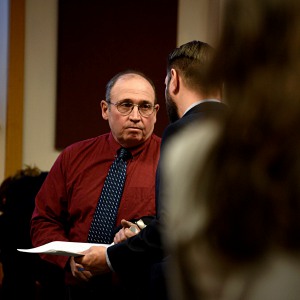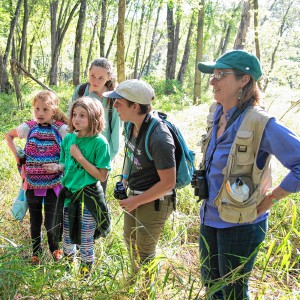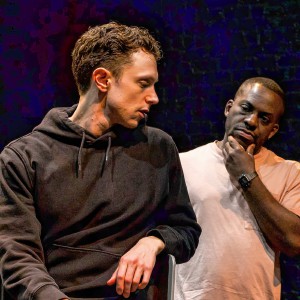The Claremont Opera House has its own epic story to tell after 125 years
| Published: 06-17-2022 10:18 PM |
It was almost never built and came perilously close to being torn down.
Now, after musical and theatrical performances of every kind imaginable, including one featuring an elephant, Claremont Opera House will host a 125th anniversary party with a stage show on June 25.
The show includes reenactments of oral histories recorded 40 years ago; The Burglar, a one-act play and the first show performed at the opera house; and several musical performances. Pianist Virginia Eskin will play the Claremont Grand March, written by Stevens High School music teacher Addison P. Wyman in 1868.
“It’s a wonderful evening celebrating the history of theater and music at the opera house,” Felicia Dalke, president of the opera house’s board of directors, said in an interview inside the 800-seat venue.
Dalke said she hit upon a theme for the celebration when Colin Sanborn, a former historical society president and circulation director at the Fiske Library, handed her a book, Claremont, New Hampshire — A Living History, an index of recorded interviews for an oral history project in 1980. Dalke took the interview tapes home.
“It was amazing to hear these stories and the whole history of so many special moments in Claremont,” she said.
An anniversary committee settled on the idea of selecting snippets of those interviews relating to the history of the opera house for the stage show.
The anniversary show has two acts. It begins with living history reenactments, said Sharon Wood, of the Off Broad Street Players. Members of the local theater group will play 10 Claremont residents who were interviewed as part of the oral history project.
Article continues after...
Yesterday's Most Read Articles
 Upper Valley winter shelters kept dozens warm and dry
Upper Valley winter shelters kept dozens warm and dry
 Former principal of South Royalton School released from prison
Former principal of South Royalton School released from prison
 Owner of Friesian horse facility ordered to pay care costs for seized animals
Owner of Friesian horse facility ordered to pay care costs for seized animals
“We picked out people who had some comments on arts and entertainment,” Wood said. “They (the actors) will step forward on the stage and recite the quotes from the oral history.”
Some of those recollections go back to the beginning of the 20th century, including that of Elizabeth Bell, who was 95 when she was interviewed.
“She attended the dedication in 1897 when she was 11,” Dalke said. “She walked over from North Street with her mother and she talked about what a big day it was for Claremont and everyone was here and the governor.
“To hear someone talk about that, from that time period, it is priceless and makes you realize what a treasure it is and how important it is to bring back to life,” Dalke said.
The audience will also hear Mrs. Pearl “Effie” White recall when an elephant was walked into the opera house for the Chimes of Normandy, a comic opera, in 1913.
Hoisting Minnie, the 3-ton elephant, up from the street to backstage did not work, so they walked her up the grand staircase and down the center aisle. At intermission, the elephant was walked back out and right past White.
“In the oral history, she said, ‘They told us to remain quiet and don’t make any sudden moves as the elephant walks by you,’ ” Dalke said.
While the stage show will be solely about opera house remembrances, a new book, Stage Whispers: A Living History Retold, covers the broader subject of arts and entertainment when Claremont was the center of cultural attractions in the Upper Valley.
As with the celebration, the committee took selected comments in the oral history about places like Roseland ballroom, movie theaters and park pavilions.
With funding from a New Hampshire Humanities grant, the committee hired writer Annalisa Parent, who combined oral history quotes and background information to tell the story of how Claremont residents kept themselves entertained.
“I think it will be a wonderful tribute to this place but also to the history of Claremont and will remind people that this building has gone through its ebbs and flows of support and successes and failures,” Dalke said. “The book is intended to remind people how special this building is and how special Claremont is in its rich, rich history in arts and entertainment,” Dalke said.
Two musical performances will bridge the opera house’s history and the current day. The Claremont American Band, which was at the original dedication, will play John Philip Sousa’s The Stars and Stripes Forever, which the composer played in Claremont with a marching band of 50 on the opera house stage. And Melissa Richmond, executive director of the West Claremont Center for Music and Arts, and a classically trained flutist will also perform.
Throughout its history, the opera house has relied on the persistence of residents who were committed to building and maintaining it.
Construction began in the fall of 1895 after months of disagreement and even a lawsuit trying to stop the project, author Gerald Gatz wrote in a 1982 article for Historical New Hampshire.
The first hurdle was the defeat of three separate proposals to build a sewer system for the growing town that many argued was more important than replacing the town hall.
After the third vote on the sewer project, in February 1895, voters went to the March 12 Town Meeting and easily approved warrant articles to demolish the town hall and build an opera house in the same location. But rather than settle the issue the vote gave rise to disputes over the selection of an architect that dragged on into the spring and summer, Gatz wrote.
Building committee resignations and a suit filed in Superior Court seeking to prevent the city from using public funds to build an opera house created more discord.
To break the stalemate, the building committee decided that August to begin fresh with the hiring of architect Charles Rich, a Dartmouth College graduate. Things moved quickly after that. Rich’s plans were approved and builder Hira Beckwith submitted a low bid of $47,385 ($1.6 million today), though the final cost was $62,000. Construction began in the fall of 1895 and the Italian Renaissance Revival style building was completed two years later with a dedication on June 22, 1897.
A reenactment of the 1897 dedication speeches will be a part of June 25 show, though not the one that demonstrated the raw emotion that prevailed during that time.
Dr. Osman Way, who was in the thick of the debate and had resigned as a building committee member, Gatz wrote, derided the demolition of the old town hall as “an act of vandalism,” but nevertheless said he would try to be “loyal to the rule of the majority.”
Equally controversial was the debate more than 60 years later when the opera house came close to being demolished.
By the mid-1960s the venue was closed because of its condition and lack of support for live entertainment. Dalke said former mayor Marion Phillips tried to persuade the City Council to take action and invest in needed repairs, to no avail.
Dalke said local contractors ridiculed the idea of saving the opera house and instead suggested it be taken down, leaving just the city hall offices on the first floor. But Phillips was undeterred. She brought “experts” from the Hopkins Center for the Arts at Dartmouth to visit the opera house and their opinion apparently put a stop to talk of demolition, Dalke said.
“When they came in and saw the beauty, they said, ‘This building needs to be restored.’ ”
John Bennett, now a retired Stevens High School art teacher and current member of the board of directors, spearheaded the effort to add the opera house to the National Register of Historic Places in the early 1970s. From there, Bennett worked with others to hire an architect and raise money for the restoration. The building reopened in the late 1970s.
“This place would not be here without his efforts,” Dalke said of Bennett.
Today, the city’s architectural and cultural centerpiece is in need of more repairs, including a new roof, and Dalke said they are struggling to attract large audiences in the wake of pandemic shutdowns. But for the moment, the opera house’s supporters are content to take a moment to celebrate its 125-year history and the city’s performing arts talent.
“For this show, I am most happy about having these organizations come back to the opera house and collaborate with us and be partners of the show because this is truly a community stage,” Dalke said.
For more information about the show and the book, visit www.claremontoperahouse.com.
Patrick O’Grady can be reached at pogclmt@gmail.com.

 JAG Productions announces closure, citing ‘crisis facing the arts’
JAG Productions announces closure, citing ‘crisis facing the arts’ How a hurricane and a cardinal launched a UVM professor on a new career path
How a hurricane and a cardinal launched a UVM professor on a new career path Out & About: Vermont Center for Ecostudies continues Backyard Tick Project
Out & About: Vermont Center for Ecostudies continues Backyard Tick Project Art Notes: After losing primary venues, JAG Productions persists
Art Notes: After losing primary venues, JAG Productions persists 
